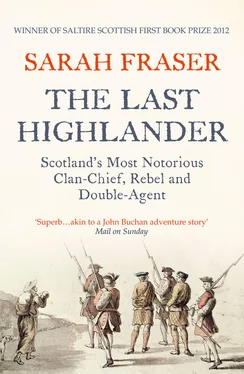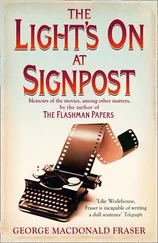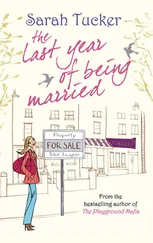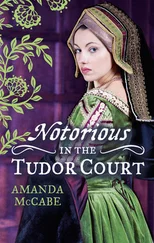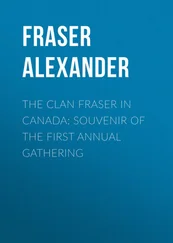1 ...7 8 9 11 12 13 ...24 In his poky student lodgings in Aberdeen in the spring of 1695, Simon saw that his family were being juggled out of position. But he had to move carefully. Hugh’s baby son might survive. If so, Simon would only ever be the Laird of Beaufort. Lord Murray could be a valuable connection for someone like him. King William was starting to equip Murray with all the trappings that made power work – royal patronage, commissions and influence at Court. Murray had cash and jobs to distribute. He was networking to get all Scotland and half the British administration in his hands. Simon had to remember that, dislike him though he did, Murray could bring Simon, the scion of a clan now closely allied to Murray’s own, forward in the world. For now, Simon needed to be part of his enemy’s faction in Scotland.
It was therefore no surprise that after completing his first degree, Simon started on postgraduate work in civil law – specifically property rights. By becoming a lawyer, then a judge, he fought to equip himself should the rightful inheritance of the Lovat titles and estates be questioned. But the sudden ratification of the marriage contract had upset Simon’s plans, and now redirected his life. The infant John was Master of Lovat, but Lovat heirs often died young. John’s older sister Amelia, and who she married, were of real interest therefore. Simon had a young man’s sense of time. Precious years climbing to power in the judiciary might be years squandered. Besides, a growing number of judges, those who were not Mackenzies, owed their appointments to Murray.
Simon felt a measure of contempt for the chief who had exposed his clan to such powerful and ruthless men. Hugh had proved himself incapable of protecting their interests, homes and people. ‘Lord Lovat was known for a man of feeble understanding,’ he wrote. In Simon’s view – fired by principled, naive outrage – the job of preparing the clan’s defence against a decisive assault on their name and country had fallen on his shoulders. ‘It was my duty to venture my person and Life to recover … [my] ancient family,’ he wrote. He bubbled with idealism and bravado. His whole upbringing had prepared him to rise heroically to this kind of crisis and defend them all, he said of himself. ‘His duty was inseparable from his Nature.’
Lord Murray saw it all rather differently. As a penniless bystander, Simon posed little threat. Murray did not notice him. Young Beaufort would require a lot more than family pride and passion to halt Atholl ambitions. Simon needed power, money and the backing of his clan. To acquire these he put university ambitions to one side, and headed for Edinburgh.
THREE
‘Nice use of the beast and the man’, 1695–96
‘Your destiny decreed to set you an apprentice in the school of affliction, and to draw you through the ordeal fire of trial, the better to mould, temper and fashion you for rule and government’
– THE REVEREND JAMES TO SIMON
Simon approached the Scottish capital full of doubts. He knew what to do, but not how to do it. He needed a patron to bring him forward in the world. ‘There are two ways of fighting,’ Machiavelli instructed a would-be Prince: ‘by law or by force. The first way is natural to men, and the second to beasts … So a prince must understand how to make nice use of the beast and the man.’ Simon came to learn to fight like a beast and a man.
A young man full of ambition and ability, but without employment or income, Simon lacked prospects. He had connections, but his best contacts in government were also his enemies. His cousin by marriage, Lord Murray, was his obvious port of call. Atholl and Murray were working to tighten their grip on Clan Fraser and would only help Simon if they thought he could assist in their plans to dominate the Highlands. Murray might even readily give Simon a job to control him, even as Murray worked to cut him off. Simon saw little choice but to dissemble with the Murrays, and offer to serve them, as the Murrays dissembled with the Frasers.
Edinburgh was a typical medieval city. Its buildings clung to the high back of a long hill like fleas and burrs on a sheep’s back. The old city cooled its carcase in a mire of swamp and loch. When Simon arrived for the first time it was still largely enclosed within its medieval city walls. The scarcity of space meant the old houses towered ten or even twelve floors over the streets below. The High Street (‘the Royal Mile’) formed the city’s spine and central nervous system. It was capillaried with narrow lanes – wynds, allies and closes leading to and from the main street. At the lower end, the east end of the High Street, the Canongate guarded the entrance to the Palace of Holyroodhouse, the image of King William III’s presence in Scotland. Heading west, halfway up the High Street, were the Scottish Parliament and offices of the judiciary. At the top end of it, on an extinct volcano, sprawled the massed bulk of Edinburgh Castle. A sleeping giant of military power, it dominated the institutions of the fragile, Williamite Scottish state.
Tall narrow houses flanked Simon as he headed up the High Street towards Parliament to find Lord Murray. He lowered his gaze to skip around the gurgling gutters, overflowing with the effluent of the piled-up city, and skirt the fat pigs rooting excitedly through it. He moved in and out of the piazzas on the ground floors of gaunt old houses. Aristocrats occupied the first floors, clerks nested on the tenth. People lived close up, bound by the economies of architecture, space and a dearth of hard cash. Merchants’ wares – woollen stuff, linen, pots – lay in heaps among the pillars, spilling from shops too tiny to do more than keep them secure at night. Ascending the buildings like a row of semaphore flags, colourful illustrations painted on boards indicated where people could find certain wares – a cut loaf, periwig, cheese, a firkin of butter, petticoat stays, from the baker, wig dresser, cheesemonger, dressmaker.
Most men of affairs were on the go by five in the morning. Before the bell of St Giles Kirk struck seven, the pioneering medical man Dr Pitcairne was seeing patients in his underground rooms near the church. Edinburghers called it the ‘groping office’, because of its darkness and its tenant’s occupation. By 6 a.m., Law Lords and lawyers had met agents and clients in the taverns and perused over half a dozen cases.
A fellow politician observed that Lord Murray was ‘so great an admirer of his master, King William, that he mimicked him in many of his gestures’. The King loved the way Murray revered him, and he showed it. He gave him a colonel’s commission (and the funding) to raise a regiment to defend Edinburgh. William did not feel safe on Scottish soil without a heavy military presence. Only the Stuart-born Queen at his side gave the Dutch Stadtholder any sense of legitimacy in the eyes of most Scots, especially after Glencoe. But the previous winter Mary had died suddenly of smallpox, aged just thirty-two.
In public, Simon echoed the Court Party’s expressions of sympathy for William III’s loss. In private, he wrote to his father: ‘I doubt not you will be in mourning [clothes] for Queen Mary, but I am resolv’d to buy none till Ki. W. dies.’ Mourning clothes, he teased, ‘perhaps may serve for the next Summer Suit’. He penned similarly jaunty notes to known fellow Jacobites: MacDonald of Glengarry and (rashly) Lady Amelia Lovat’s Jacobite brother, Lord Mungo Murray – ‘drinking’ to the death. Apart from Lord John, the Murrays remained predominantly a Jacobite clan. These letters were a young man’s folly and Simon’s first wrong move. Glengarry was married to Hugh Lovat’s sister, Isobel, and was in Lord Murray’s pay. He passed Simon’s notes to Murray, who kept them safe. They were Simon of Beaufort’s death warrant, if one were ever needed.
Читать дальше
